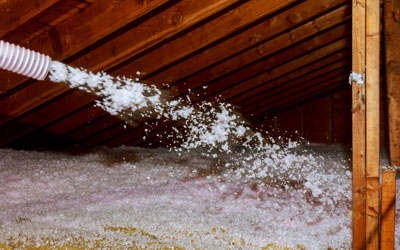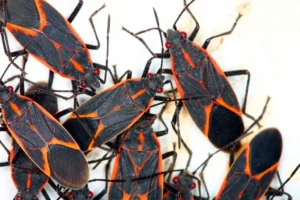 Heading into winter, all sorts of pests start looking to head indoors. Overwintering is the process that many organisms go through to survive the harsh cold and the conditions that come with it. It comes in many forms depending on the organism, but the two major ways that it manifests are through hibernation and migration.
Heading into winter, all sorts of pests start looking to head indoors. Overwintering is the process that many organisms go through to survive the harsh cold and the conditions that come with it. It comes in many forms depending on the organism, but the two major ways that it manifests are through hibernation and migration.
Here in Eastern TN, there are a few insects to look out for when it gets cold. Ladybugs, boxelder bugs, and stink bugs all like to spend the winter indoors, so your home could be their target in the coming weeks if it isn’t already! To learn how to prevent insects from overwintering in your home, read on for advice from the Johnson Pest Control technicians!
Fall Invaders: Who Are They?
Lady bugs, boxelder bugs, and stink bugs are all grouped in together with “fall invaders,” a list of pests that start to make their way into our homes as the temperatures drop. Let’s learn more about them:
- Ladybugs: While these are one of the most beloved insects here in Eastern TN, when they find your home suitable for hibernation, their numbers can become overwhelming. Ladybugs often find their way in through gaps around windows and doors.
- Boxelder bugs: For most of the year, boxelder bugs live in the bark of boxelder trees. Fitting! However, even if you don’t have a boxelder or other maple tree on your property, you could be in for a swarm of nearby boxelder bugs trying to get inside your home this winter.
- Stink bugs: As an invasive species, stink bugs have no native predators in the region. Their numbers have been multiplying every year, and as a result, more and more homeowners in the area have dealt with stink bug infestations.
How to Prevent Bugs Overwintering in Your Home
The best way to keep pests out of your house this winter is to limit the number of access points to your home that they have. We recommend taking the following steps to keep bugs out:
- Look for cracks in the foundation of your home, plumbing fixtures, and roofing. Seal any gaps with a silicone-based caulk.
- Install sweeps on your doors and screens on your windows.
- Replace any loose mortar and weather stripping.
- Use screens on your vents and chimney openings.
Professional Help for Overwintering Pests
If you’ve tried all of our prevention strategies to no avail, it’s time to bring in a professional pest control technician to assess your situation. At Johnson Pest Control, we train our techs to complete exhaustive inspections to ensure that no vulnerability is left undiscovered. We use the safest and most effective pest control products in the industry to get rid of unwanted pests and provide our customers with top tips to prevent problems on their own going forward. If you need help today, reach out for a free quote!
 Whether you’re looking to upgrade your existing insulation or need to insulate a brand-new home, TAP® Insulation is a sound choice. This home insulation product is renowned for many reasons, including its energy-efficient performance and pest-resistant properties. Infused with borate, TAP works to prevent and control pest problems in the household. Because it outperforms traditional insulation, TAP is quickly becoming the go-to insulation option here in Sevierville TN and beyond. The pros at Johnson Pest Control are here to share all you need to know about this industry-leading home insulation option.
Whether you’re looking to upgrade your existing insulation or need to insulate a brand-new home, TAP® Insulation is a sound choice. This home insulation product is renowned for many reasons, including its energy-efficient performance and pest-resistant properties. Infused with borate, TAP works to prevent and control pest problems in the household. Because it outperforms traditional insulation, TAP is quickly becoming the go-to insulation option here in Sevierville TN and beyond. The pros at Johnson Pest Control are here to share all you need to know about this industry-leading home insulation option. Boxelder Bugs are flat, dark brown pests that are present all throughout the year, but are mainly noticed during the fall and winter seasons. There is nothing to fret, though, because they are completely harmless.
Boxelder Bugs are flat, dark brown pests that are present all throughout the year, but are mainly noticed during the fall and winter seasons. There is nothing to fret, though, because they are completely harmless.